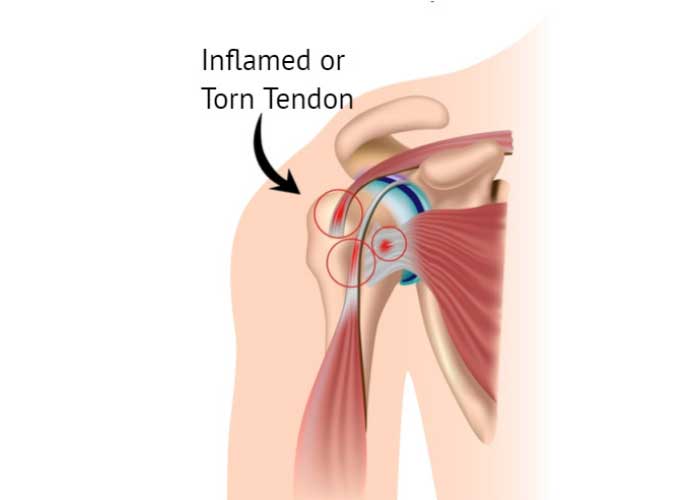Biceps Tenodesis Surgeon

Are you an athlete who participates in sports that involve throwing overhead? If so, you may be at risk of developing an injury to the biceps tendon in the shoulder. Biceps tenodesis surgeon, Doctor Riley J. Williams provides diagnosis as well as surgical and nonsurgical treatment options for patients in Manhattan, Brooklyn, New York City and surrounding areas who have experienced a biceps tendon tear. Contact Dr. Williams’ team today!
What is a biceps tendon injury?
The two portions of the biceps muscle travel along the anterior (front) portion of the humerus (upper arm bone) and divide into two tendons at the top of the shoulder. The long head of the biceps tendon is attached directly to the superior labrum and passes through the shoulder joint. The short head of the biceps tendon attaches to the coracoid process of the shoulder blade. These tendons can be frayed, or torn, away from their attachment sites as a result of extreme wear-and-tear or direct impact to the shoulder.

What is a biceps tenodesis?
Most patients recover successfully with conservative therapy after a proximal biceps tendon injury. However, in patients that experience cramping, more severe pain, or who have had unsuccessful conservative treatment, surgical intervention may be necessary. The biceps tendon can be surgically repaired by removing the frayed fragments of the tendon by debridement. Alternatively, a biceps tenodesis can be performed. This procedure involves removing the damaged portion of the biceps tendon and reattaching the remaining distal portion to the proximal humerus. The goal of a biceps tenodesis procedure is to reduce the irritation in the tendon by stabilizing its insertion site. Reattaching the tendon using the tenodesis procedure reduces pain and restores arm and shoulder function. Dr. Riley J. Williams, Orthopedic shoulder surgeon, treats patients in Manhattan, Brooklyn, New York City, NY and surrounding areas who require a biceps tenodesis for a biceps tendon injury.
How is biceps tenodesis performed?
A biceps tenodesis procedure can be performed as an isolated procedure; it is more commonly performed in conjunction with other arthroscopic shoulder procedures. During this procedure, the patient is placed under regional anesthesia. An arthroscope (small camera) is inserted into the shoulder joint to view the tendons and muscles. Specialized surgical instruments are utilized to remove the damaged portion of the biceps tendon. The tendon is then released from its attachment site (tenotomy), and subsequently re-anchored to the humerus by special surgical fixation devices.
What are the benefits of biceps tenodesis?
Dr. Williams prefers the arthroscopic method for biceps tenodesis because it is minimally invasive. The camera, specialized surgical instruments, and incisions are small and allow for a faster recovery time for the patient. Arthroscopic biceps tenodesis also reduces the risk of infection, blood loss, as well as decreased pain and inflammation following surgery. Biceps tenodesis has a positive cosmetic effect on the arm; biceps tenodesis can eliminate the bulge or “Popeye” muscle characteristic of some biceps ruptures. A biceps tenodesis can also prevent further damage to the rotator cuff, caused by the biceps tendon.
How long is the recovery period after a biceps tenodesis procedure?
Although the recovery period is variable, most patients can expect a functional range of motion within 2 months following a successful biceps tenodesis. Shoulder strength and range of motion will continue to improve for a year or more after surgery, at which time most patients can expect to return to their normal activities. In general, patients in New York can expect the following:
- A sling is applied immediately following surgery to immobilize the shoulder joint and is used for approximately 2 weeks.
- Pain control with ice and non-steroidal anti-inflammatory medications.
- Participation in a physical rehabilitation program. Patients are highly encouraged to begin moving their arm as soon after surgery as possible. Passive range of motion exercises begin within the first week after surgery, and active range of motion exercises begin around four weeks after surgery. The key to a successful biceps tenodesis recovery is adhering to and completing a physical rehabilitation program.
For more information on biceps tenodesis, or to find a treatment for a biceps tendon injury, please contact the office of Riley J. Williams, MD, an orthopedic shoulder surgeon serving Manhattan, Brooklyn, New York City, NY and surrounding areas.
